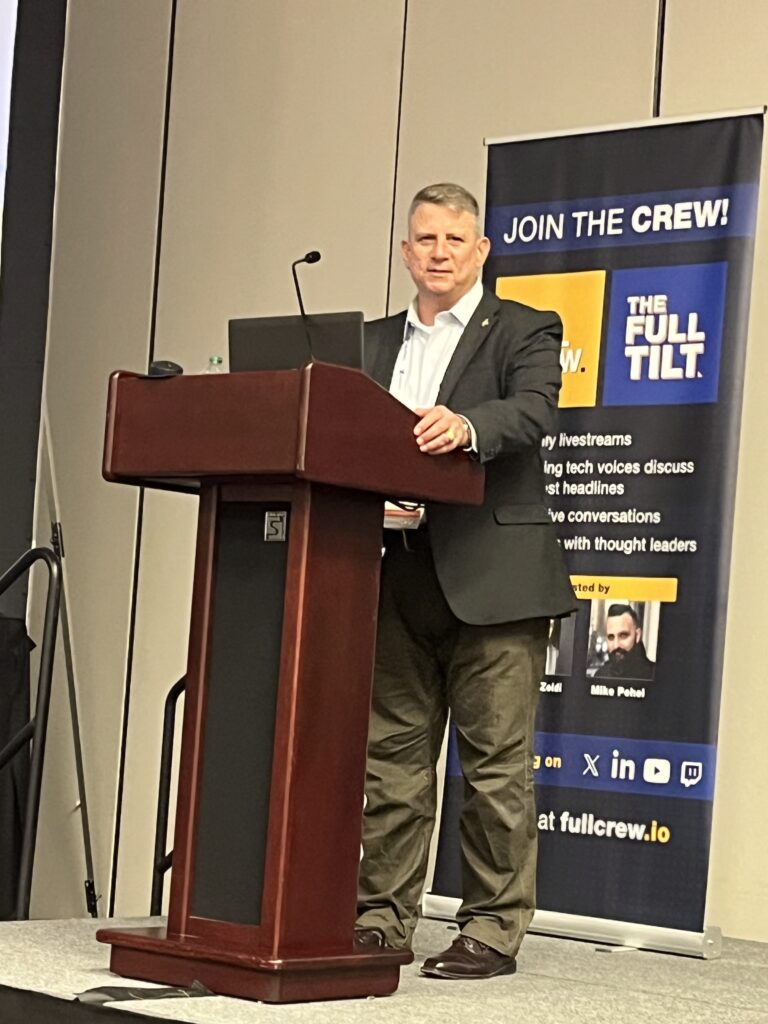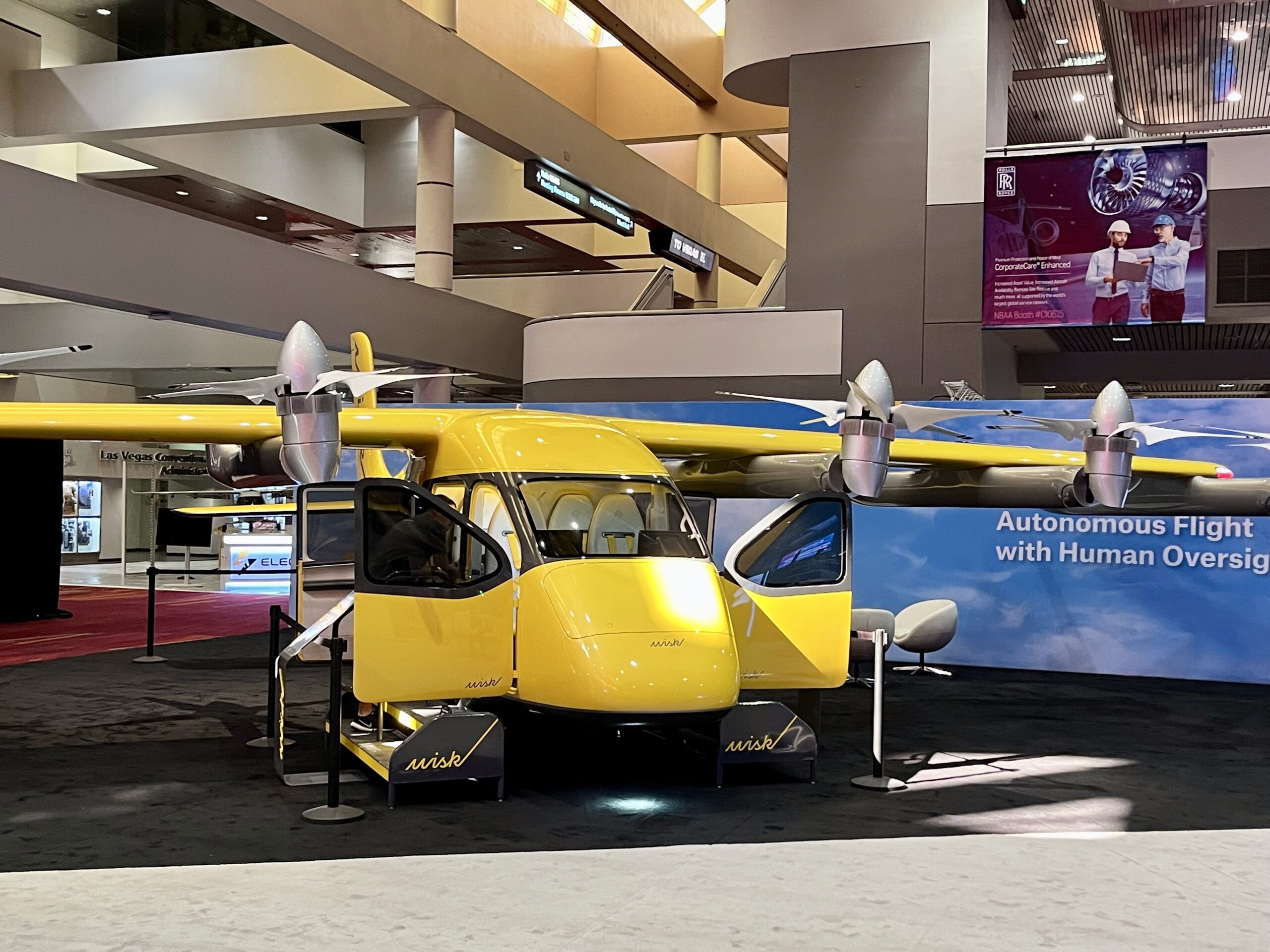By: Dawn Zoldi
Advanced Air Mobility (AAM) has captured the imagination of many. With sprawling headlines, glossy videos and billions in investment fueling futuristic visions of electric air taxis whisking travelers above urban congestion, it seems the only direction is up. Yet despite more than 700 eVTOL (electric vertical takeoff and landing) aircraft designs and landmark actions like last fall’s Special Federal Aviation Regulation (SFAR), the reality seems much different than some of the headlines. Why hasn’t AAM actually “gotten off the ground”?
The Law-Tech Connect panel “AAM, Are We There Yet? Updates on Tech & Regs” tacked this issue. Framed best by panel moderator Charlton Evans, CEO of End State Solutions, “This topic is becoming far more popular because it’s becoming more real and real by the day. However, it’s not real yet.” This statement reflects the AAM predicament: while some progress is visible, passenger-ready, certified daily operations still remain years away.

Diversity in Electric Aviation: More Designs, More Complexity
A rich diversity in aircraft designs helps to fuel the surge in AAM interest. Toni Drummond, Co-Founder of Future Flight Global, noted, “We have a couple different categories right now…vectored thrust is the largest category…hover bikes and personal flying devices…lift and cruise…and wingless multicopters.”
From the Archer Midnight and Joby’s powered lift platforms to Volocopter’s multicopter approach and Beta Technologies’ dual-thrust models, every variation brings distinctive challenges. Drummond highlighted, “These aircraft all require somewhat different certification efforts at different levels, as well as accounting for the different technologies that accompany each.”
These distinctions matter, because the Federal Aviation Administration (FAA) and European Union Aviation Safety Agency (EASA) are accustomed to certifying proven airframes, not radically new platforms with unique flight behaviors and propulsion systems. Joel Roberson, Partner at Holland & Knight, underscored the magnitude of this regulatory shift. “This is injecting into the system a significant amount of change where the FAA is having to think through aerodynamics it may not be not familiar with, not just focus on aircraft it’s already certified. These are brand new aircraft.”
SFAR: Regulatory Breakthrough, But Many Hurdles Remain
Last year, the FAA published the SFAR, setting the first ruleset to facilitate the integration of powered-lift aircraft into the national airspace. Until then, manufacturers faced a regulatory void. Their eVTOLs couldn’t be classed as airplanes or rotorcraft without awkward exceptions. After much debate, the FAA established a “power lift” category, which include eVTOL types, distinct certification and training pathways. Roberson clarified, “Powered lift is…an aircraft that takes off vertically, but then can transition to fly on the wing. So these are the Jobys and Archers of the world…” he said.
Powered-Lift Aircraft Certification
The SFAR applies to battery-electric aircraft certified under Part 21.17(b) rules, weighing no more than 12,500 pounds and typically carrying six passengers or fewer. It draws airworthiness standards from multiple existing parts (23, 25, 27, 29, 31, 33, and 35), covering everything from flight performance to structural safety and energy reserves. These certification pathways reflect the blend of helicopter and airplane capabilities to enable a practical regulatory framework for designs beyond conventional categories.
Manufacturers are guided to comply with these standards for certification, but the FAA retains discretion to impose additional requirements for aircraft with unique characteristics. The SFAR is slated to remain in effect for ten years to allow time for regulatory adaptation based on operational experience and stakeholder feedback. This period will help regulatory authorities collect real-world data and refine the certification process for safety, reliability and efficiency as new forms of AAM evolve.
Operational Rules for AAM Aircraft
The SFAR implements a performance-based approach to operating rules, which marked a significant shift from legacy aviation regulation. Operating requirements are tailored to the unique capabilities of powered-lift and eVTOL aircraft, adopting certain helicopter-specific rules for vertical phases of flight while applying airplane standards for cruise flight. Specifically, helicopter-based operational requirements are applied during vertical take-off and landing phases, while performance-based standards govern cruise and horizontal flight. Operations are addressed under business aviation Parts 91, 135, and 136, supporting use cases from short-haul urban transportation and cargo delivery to medevac, disaster relief and air tours.
Pilot Training and Certification
The SFAR’s most significant impact is on pilot and instructor training for eVTOL and powered-lift aircraft. (See prior AG coverage of SFAR pilot training here.) Recognizing the hybrid nature of such aircraft, the rule provides flexibility in training protocols, including embracing simulator training. Roberson believes this sim training provision will prove essential to aircraft manufacturers, given the lack of widely available trainer aircraft and the cockpit differences among types. “If you build an aircraft and you get it certified, but there’s no pathway for pilots to fly the aircraft, then there will be a huge blocker to innovation and growth,” he said.
During the ten-year SFAR period, the FAA will gather feedback from real-world operations. The FAA’s Flight Standardization Board will review and approve training footprints for specific aircraft. Commercial fleet operators will be required to get their programs validated based on this guidance.
Not the Be-All-End-All Solution
But SFAR is not a magic bullet. It initially addresses private use and scheduled Part 135 operations, not mass-market airliner-scale applications. Roberson described the SFAR as “a regulation that will be in place for ten years, with a constant…feedback loop.” In short, it creates a framework for evolution, not instant transformation.
Infrastructure and Systems: The Unseen Bottleneck
Even with more flexible regulation, the physical and digital infrastructure to support AAM remains lacking. Existing air traffic management (ATM) and meteorological systems were built for legacy aviation, not swarms of low-altitude, battery-powered aircraft over cities.

Don Berchoff, CEO of TruWeather Solutions, warned, “The current weather systems that we have today weren’t built for these types of aircraft…It doesn’t mean that they can’t operate safely…but will they be able to operate efficiently enough from the business economics perspective?”
Berchoff got granular: “You can’t afford not to fly 30% of the time…we cancel and delay missions about 30% of the time.” For AAM to succeed economically, flight availability must increase and detailed micro-weather data must be woven into daily operations. Innovations like NASA’s Fort Worth testbed, scanning 3D winds and integrating arrays of sensors, are underway. Yet, “you can’t solve the weather problem with one instrument,” Berchoff cautioned. (See prior AG coverage of improving weather precision for AAM here).
Air traffic management systems are also in flux. Berchoff, pulling from deep government experience, recounted, “I was involved in writing the next gen concept of operations…everything that’s happening today was predicted in 2002, 2003…if you want to actually accomplish something 5 or 10 years ahead…you can’t wait until 2030 for something to happen in 2031.” (See prior AG coverage of the need for infrastructure standards here.)
The bottom line? Tech lag and infrastructure inertia slow progress as much as regulatory caution.
Certification and Acceptance: Turtles and Sloths
Despite regulatory optimism, Evans emphasized that manufacturers face a long “crawl, walk, run” journey from prototype to revenue flights to scalable fleets, “First they get a prototype working, and they put that prototype under an experimental certificate…You can’t use that experimental certificate to go fly for revenue.”

AAM’s crawl toward commercial operations can be frustrating. As Drummond put it, “It’s like we’re moving…but we’re just at a turtle and sloth pace.” Even efforts to demonstrate air taxi fleets at high-visibility events, such as the Paris Olympics, have stumbled on certification and community support. Drummond reflected, “Volocopter…didn’t have passenger carrying certification…EASA is not [going] to put passengers…on an uncertified airplane.” She also noted, “Paris was not supporting it…They (Volocopter) hadn’t done a good enough job of getting the community on board.” As such, those Volocopter flights never happened.
International Harmonization: Necessary, Still Nascent
Global harmonization is another pillar of future AAM success. Regulatory standards continue to evolve at different rates worldwide.
Berchoff actively engages with ICAO, EASA and standards groups to align weather sensor and operational frameworks. He has seen incremental progress and emphasized the importance of harmonization. “We want to harmonize…so that no matter where a company goes around the world, they…can have the same advantages that we hope we’re going to have in the United States.”
Roberson added, “Collaboration on the front end is super important…make sure that the aircraft manufacturer doesn’t get a certification and then have to go back…to complete a portion that the FAA felt was important.” Without harmonized standards, reciprocal recognition of certifications risks breaking down.
As one example of progress, Berchoff noted, “We just went about getting a new ASTM standard…what this is going to do is allow for hiring of third party weather service providers and to use nontraditional aviation weather sensors to support…operations to fill the gaps…” An FAA advisory circular expanding weather integration is slated for 2026, Berchoff said.
Yet, embedded differences remain, such as the U.S. model of decentralized UAS traffic management (UTM) versus Europe’s centralized flight information management systems. This difference reflects varying regulatory philosophies: U.S. prioritizes flexibility and competition, while Europe emphasizes unified oversight and streamlined data control.
The Industry Role: Moving at the Speed of Preparedness
The pace of AAM isn’t just set by regulators. Often, companies lack the engineering documentation, safety validations and operations data to answer critical FAA questions. Roberson was forthright. “The FAA will move as fast as you can move,” he said. For example, batteries, how they’re secured, managed in crises, isolated from passengers, remain an active area of symposiums and regulatory debate. Roberson advised, “Industry needs to be prepared to lean in.”
Clarity Amid Complexity: The Roadblocks to Real Flight
Ultimately, AAM isn’t held back by a single factor, but an intersection of certification, infrastructure, weather systems, training and harmonization. The aviation sector’s extraordinary safety record is sacrosanct; rapid change will only happen where risk is mitigated and evidence is overwhelming. Roberson cautioned, “The first is that we cannot do is throw out the regulatory model that has helped create a very safe airspace that we have today. The other thing we cannot do is not change.”
Drummond reminded us why safety is paramount. “There were 38 million safe flight segments between the airlines and business aviation in 2024. We already have a proven safety track record. That’s the main goal…we want to continue that,” she said.

The Future of Flight: From Regulatory Milestones to Daily Reality
As the world waits for the true dawn of AAM, practical collaboration between regulators, manufacturers, data providers and municipal partners remains essential. The SFAR provides a foundation, not a finish line. Progress in certification, harmonized standards, and operational capability will drive the next phase, but only if infrastructure investment and public trust match each milestone.
Evans’ pragmatic forecast framed the urgency and uncertainty: “If Joby and Archer are flying in the UAE prior to 2028, then there will be sufficient pressure on all parties to fly in LA in 2028. That’s where I’ll put my money. But if they aren’t, all bets are off.”
Until then, AAM remains a promise, not yet part of everyday city life. The turtle and sloth still set the pace, as the industry continues to find the right balance between safety, speed and reliability.

